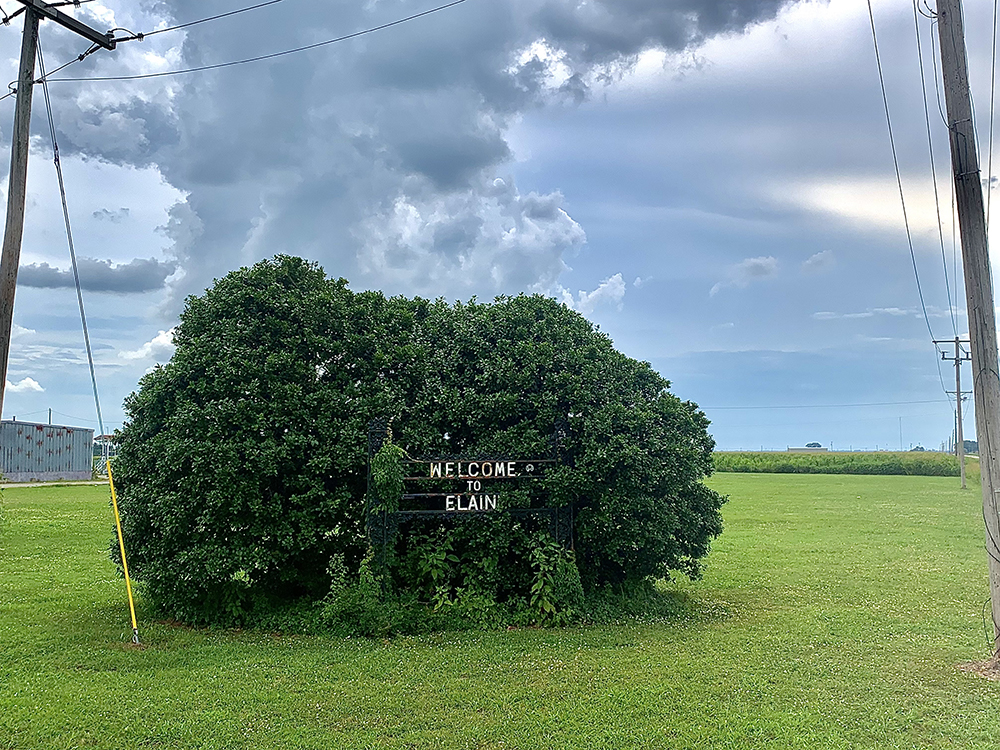Water ripples throughout Memphis history. The flooding waters of the Mississippi River drove those first Memphians to settle atop the Fourth Chickasaw Bluff. Stagnant water from rain cisterns and shallow wells bred mosquitos that brought about the yellow fever epidemic, costing the city its charter in 1878. The epidemic, in turn, led Memphians, searching for a reliable water source in the name of sanitation and health, to discover the Memphis aquifer, the sole source of Memphis’ water today. In this century, residents in South Memphis have to fight to protect our aquifer — against the proposed construction of the Byhalia crude oil pipeline and against the continued threats of contamination from Tennessee Valley Authority’s Allen Fossil Plant.
With all its complexities, water is now at the forefront of the Memphis Brooks Museum of Art’s upcoming exhibition, “Calida Rawles: Away with the Tides,” on display March 19th through September 7th. Indeed, the California-based artist’s exhibit of 10 paintings and a three-channel video explores water’s dualities, specifically as a space for Black healing, resilience, and joy.
Water is a central motif in Rawles’ works. Through it, Rawles asks questions about Black people’s relationships with water. She probes the stereotype about Black people not knowing how to swim. “Where’d it come from? Oh, because you couldn’t have pools; there was segregation at the pool. This is a place you don’t see us, and I don’t see myself, and you think we don’t belong.”
This history and these stereotypes have rippling effects. According to the Centers for Disease Control and Prevention, drowning death rates for Black people under 30 are 1.5 times higher than for white people, and 70 percent of Black Americans cannot swim, compared to 31 percent for white Americans, according to a study by USA Swimming and the University of Memphis.
“And so, I thought that could be like an undercurrent to all of the work,” Rawles says. “When you put a Black body in that water, you’re dispelling something — without even talking about a subject. And then if I paint the figures comfortably and with agency, if people think, ‘I could feel comfortable like that,’ ‘I don’t have to be afraid of the water,’ or maybe ‘I should learn to swim,’ I thought I could do that, too.”
In turn, her paintings allow Black bodies to take up space, her canvases large in size, but more importantly they allow them to take up space in water, as historically charged as it is. For this exhibit, Rawles focuses on the bodies of water of Overtown, Miami, a historically Black neighborhood, which Rawles says was once like “a second Harlem.”
Founded in 1896 for and by African Americans, the neighborhood thrived as an entertainment district during the early- to mid-20th century in the Jim Crow era. “It had a thriving community of 300 businesses, and everyone used to go there, and everyone used to do shows and go to all the stuff,” Rawles says.
But in the late 1950s, with the passage of Eisenhower’s Federal-Aid Highway Act, the construction of two major freeways displaced thousands of Overtown residents, or “Towners,” through eminent domain. In the aftermath, Rawles says, “They lost their homes, and they lost their businesses, and they had no way to [recover]. The job market just fell.”
The highways essentially decimated the neighborhood, the population dropping and blight taking over what once was a desirable and vibrant community of Black Miami’s professional class in the name of “progress.” Today, though, many say Overtown is experiencing a renaissance, as advocates and community members try to rebuild and reinvigorate what once was, but its scars are not forgotten even as hope endures.
And so, Rawles dedicated her first solo museum exhibit to painting the people of Overtown in her signature way — in bodies of water. She’s taken her subjects, young and old, to Gibson Pool, a product of segregation, and Virginia Key Beach, once designated as a Black beach. In this way, she’s also able to probe the Transatlantic slave trade. Her subjects float, their bodies bending the will of the water, balanced and relaxed in waters haunted by the past.
“I wanted to make Overtown proud,” she says. “That’s not how I usually work; it’d be a subject or how I feel or a response to news or just what I want to paint. You want to paint from your heart and hope [viewers] get it because you don’t want the viewer to influence what you create.”
Through all her portraits of Overtowners, Rawles adds, “I’m really talking about various communities around. I want to inspire people to learn more about communities and not feel like if you look at them right now you know the whole history.”
While “Away with the Tides” is in Memphis, Rose Smith, the Brooks’ assistant curator of photography, hopes viewers can connect Miami’s Overtown with Memphis’ Orange Mound. “Miami’s Overtown community neighborhood mirrors Memphis’ Orange Mound community,” they say, pointing out how both neighborhoods were founded for and by African Americans in similar time periods. “We want to talk about the ways in which these communities reflect each other, although the Black community in Memphis didn’t experience a highway obstruction. But certainly, there are other things that we can glean and show parallels between these two communities.”
The exhibit will even lead into an interactive gallery wherein the Brooks will highlight Memphis’ own Black swim history, for which Smith dug into the archives, searching through photos and newspaper clippings at the Benjamin L. Hooks Central Library.
“We want this exhibition to engender joy, rest, meditation and healing within our Memphis community,” Smith says. “We also want to advocate for water accessibility, equity, and safety for our community.”
“Calida Rawles: Away with the Tides” is on display at the Memphis Brooks Museum of Art through September 7th. For more information, visit brooksmuseum.org/exhibitions/calida-rawles-away-with-the-tides.




